Areca Palm Care – Getting The Right Light And Water Levels Is Crucial

HOUSEPLANTS > ARECA-PALM
Chris is a gardening writer and nature enthusiast. He graduated from Oxford Brookes University in 2022 with an MA in Psychology. Chris works with the Leeds Green Action Society, helping their food cooperative by growing various fruit and vegetables on their two allotments in Hyde Park, Leeds.
Reviewed By COLIN SKELLY

Colin is a Horticulturist and Horticultural Consultant with experience in a range of practical and managerial roles across heritage, commercial and public horticulture. He holds the Royal Horticultural Society’s Master of Horticulture award and has a particular interest in horticultural ecology and naturalistic planting for habitat and climate resilience.
ARECA PALM GUIDES
If you’re looking for a palm to grow in a greenhouse or keep safely ensconced in your home, then the areca, or Dypsis lutescens, could be the one for you.
While it turns out that some palms are more than happy to spend their lives outside, there are those, the Areca Palm included, that need to be sheltered from our relatively unforgiving weather.
Overview
| Botanical Name | Dypsis lutescens |
| Common Name(s) | Areca Palm / Bamboo Palm |
| Plant Type | Palm / Houseplant |
| Native Area | Madagascar |
| Hardiness Rating | H1A |
| Foliage | Evergreen |
| Flowers | Yellow panicled flowers |
| When To Plant | Any time indoors |
| When To Prune | Any time indoors |
Sunlight
Preferred
Partial Shade
Exposure
Sheltered
Size
Height
4 – 8M
Spread
2.5 – 4M
Bloom Time
Late Spring / Early Summer
Soil
Preferred
Loam
Moisture
Well-drained
pH
Acidic to neutral
While Arecas can reach impressive heights of up to 8m at full maturity, buying one of this size can be prohibitively expensive.
That’s why most areca palms bought as houseplants come in smaller sizes, leaving it up to you to nurture them to maturity.
Compared to some other houseplants, an areca palm requires a little more attention.
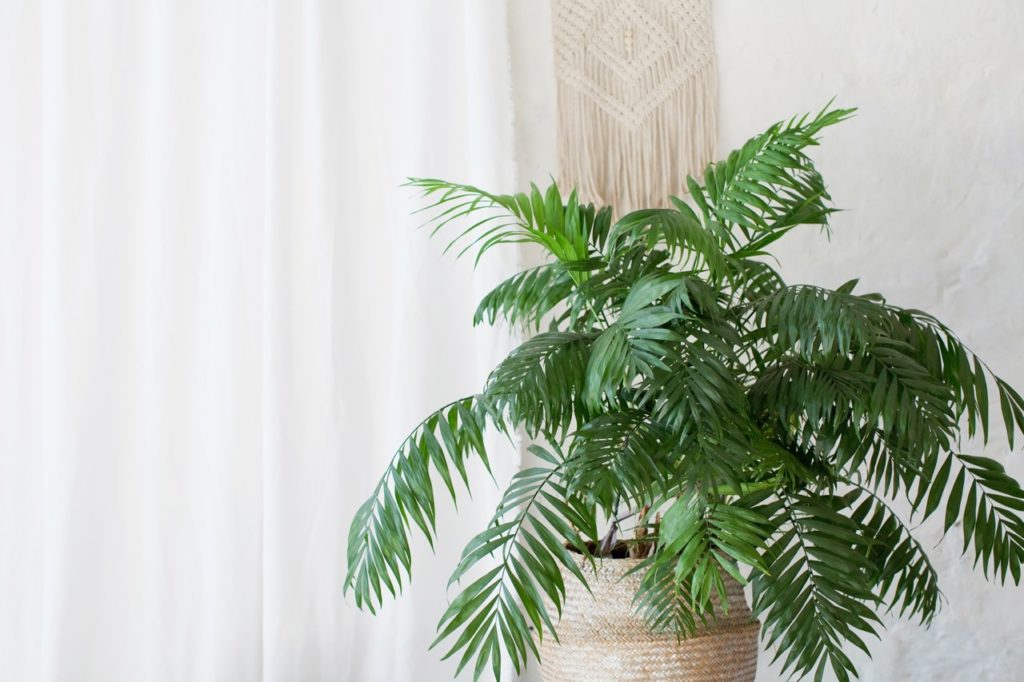
Give them the wrong amount of light or get the water levels wrong and there’s not much room for forgiveness – be warned of this if you’re only a casual or beginner houseplant owner!
How To Grow Areca Palm
You’ll be pleased to know that Areca palm can be grown and propagated very easily.
Most will buy a mature plant from a garden centre or online retailer.
However, if propagating an existing plant, simply divide the plant carefully when repotting, or cut off an offshoot with a knife and replant it in similar conditions.
Growing From Seed
It’s possible to grow areca palm from seed, but the process requires patience, as it can be up to two months between planting and germination.
Simply soak the seeds in lukewarm water for 2 days and then sow into a plastic pot in the appropriate growing medium.
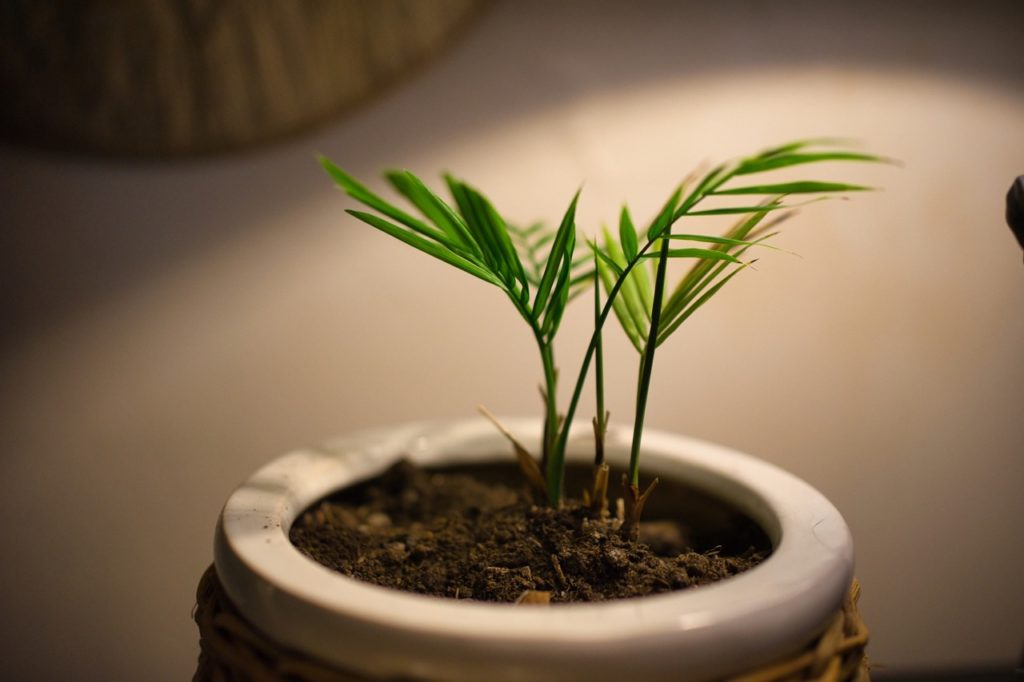
Then, place the whole pot in a plastic bag with a zipper and add water and universal fertiliser for the perlite to absorb.
Leave the bag somewhere with a daytime temperature of around 26°C and wait patiently for your seeds to germinate.
Areca Palm Care
With what we’ve just said in mind, here’s how to ensure your Areca palm has the best chance of survival.
Sunlight Exposure
Getting the right levels of sunlight is crucial.
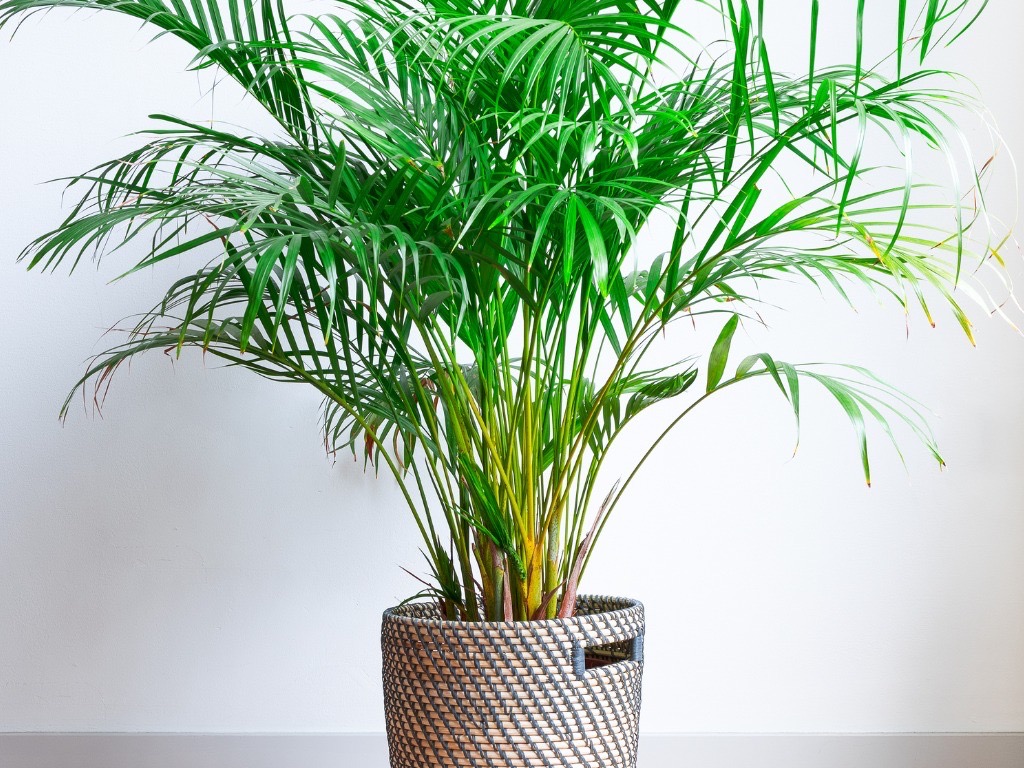
Growing areca palms indoors demands bright sunlight, but it must be indirect, as direct light will cause scorching of the leaves, giving them a yellow, wilted appearance which can be hard to recover from.
These plants favour windows that face south or west to capture rays shining north or eastward.
Soil Requirements
Another quick way to harm or even kill an areca palm is waterlogged soil, so take care that you take steps to improve the drainage if it comes in soil that doesn’t drain well.
Mixing bark or sand through your soil can help to improve drainage.
In terms of acidity, neutral or acidic soils are best.
Watering
While waterlogged soil can be detrimental, this is a thirsty plant that likes fairly frequent watering.
“Dypsis lutescens is adapted to wet tropical conditions in the forest under canopy of Madagascar,” shares Master Horticulturist Colin Skelly.
“This is what you are trying to replicate in your home – bright conditions but not direct, like the dappled shade under trees; plentiful water but not boggy conditions, ensuring the moisture drains from the soil.
“Get this right and it will be a home-from-home for your Areca palm.”
Check the top of the soil with your finger or the back of your hand, and give it a drink when it feels dry.

The exact frequency will depend on your plant and the conditions it lives in, but as a ballpark, you may find yourself watering every 4-7 days, depending on soil dryness.
If your areca palm is in a pot, ensure there are holes in the bottom to allow drainage and if the pot stands in a dish, empty any excess water out of the dish shortly after watering to facilitate proper drainage.
I have personally had issues growing this plant in the past where I had been inadvertently overwatering and allowing the plant to sit in moisture for extended periods.
You will know if you experience the same issue because the leaves will begin to turn brown and wilt.
Temperature & Humidity
This plant likes a temperature between 16-24°C which is comfortably within the room temperature of most homes.
Dead areas with red or brown colouration can indicate low temperature and brown leaves (as well as being a sign of under/overwatering) can also suggest that the air is too dry, which you can tackle by misting the leaves each day.
Feeding
These plants are hungry as well as thirsty and enjoy regular feeding.
Indoor arecas like to be fed quarterly but will tolerate 3 feeds in a year.
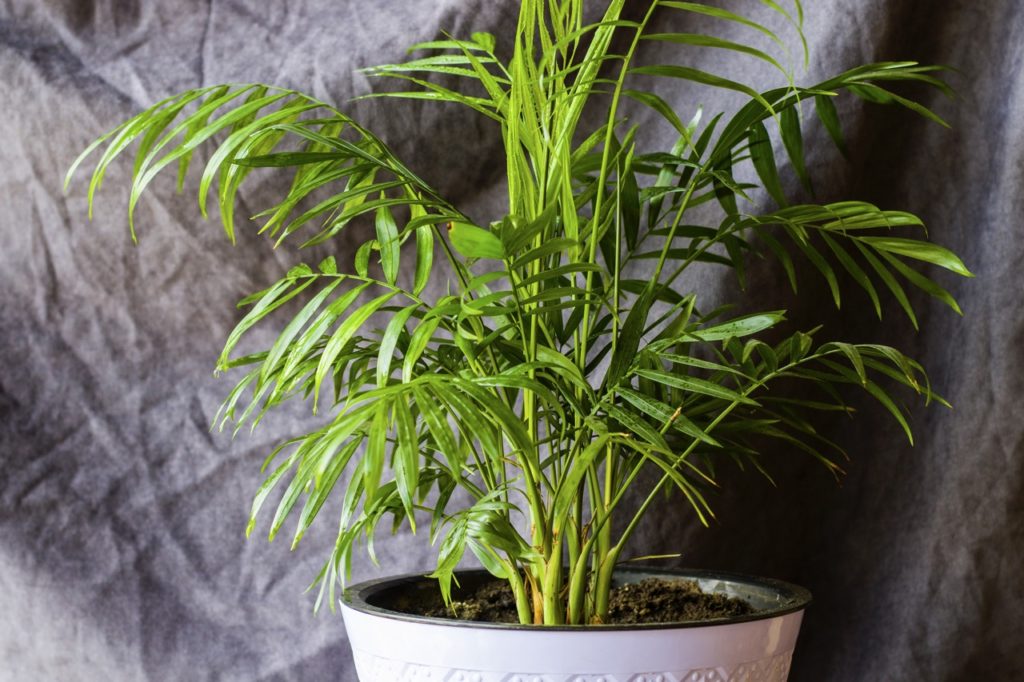
Use a slow-release 8-2-12 fertiliser and give 1-2 teaspoons for a small pot, or 1-2 tablespoons for a larger one.
For best results just sprinkle the fertiliser on the top layer of the soil before watering.
Repotting
Repotting an areca is easy, just shimmy the plant from its current pot, give it a gentle shake to dislodge as much soil as possible from the root ball, and then pop it into a new container with dry soil.
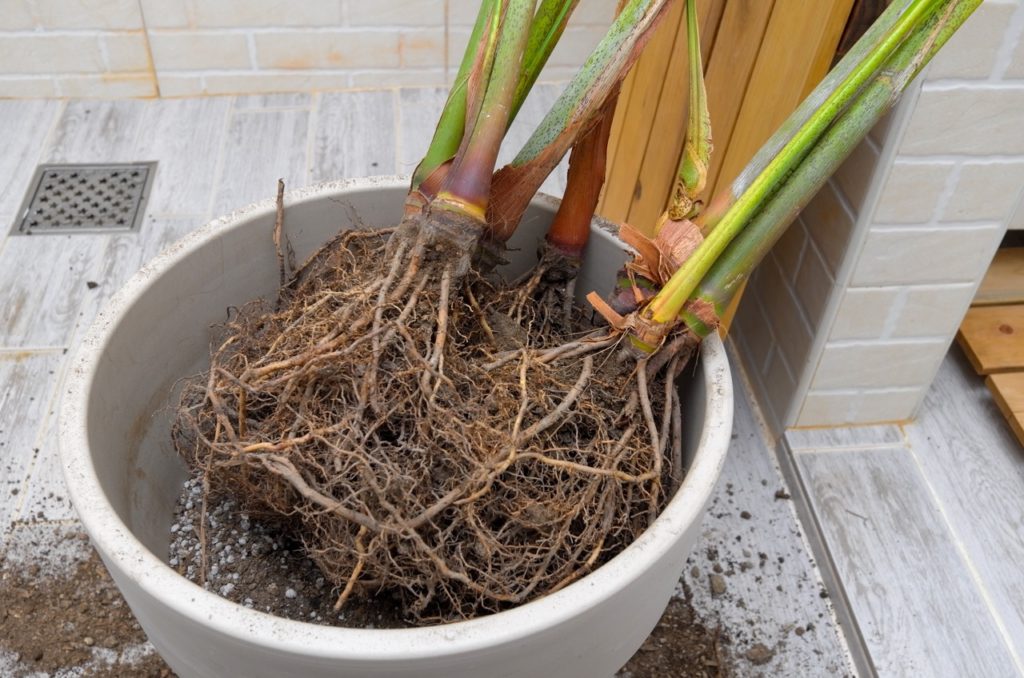
Make sure the top of the soil attached to the plant is level with the top of the new soil, then give it a little water.
You will want to give the new plant at least 5cm space around its roots to allow the plant to grow – though don’t give too much space if you’re happy with the current size of your palm.
Common Problems
This plant can attract a few pests including thrips and mealybugs, but thankfully preventing and removing them isn’t too difficult.
Thrips are small sap-sucking insects that cause mottling and other leaf damage.
Predatory mites and sticking traps are a good non-harmful way to keep them at bay, and various pesticides are available.
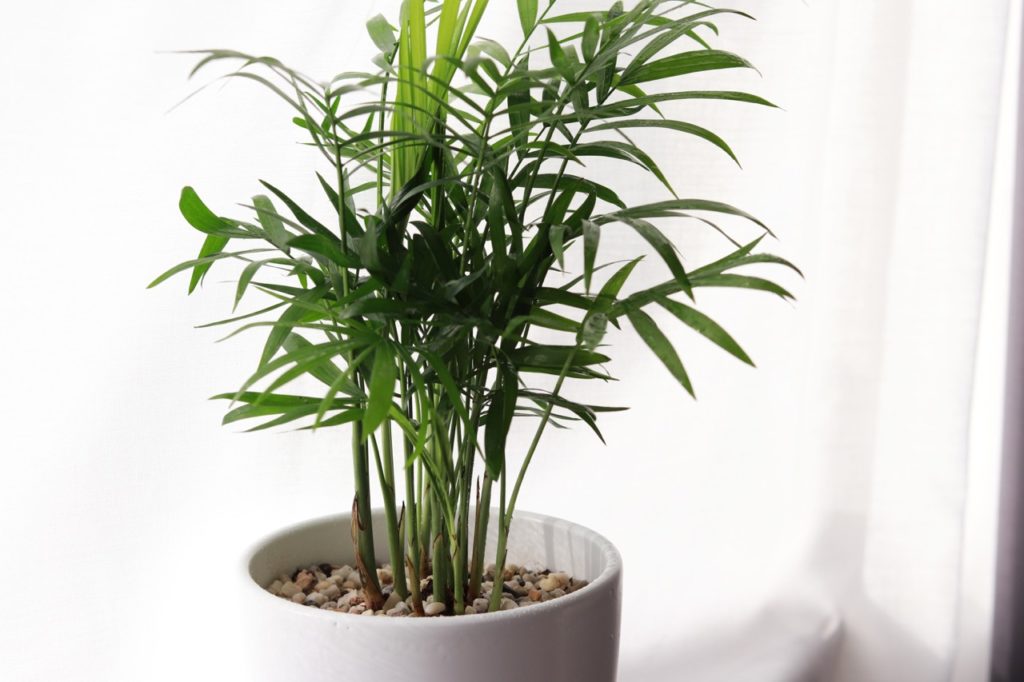
Mealybugs suck sap as well, and leave behind a trademark fluffy wax substance.
Remove infected leaves from the plant and their environment to prevent further spread.
